You'll Never Guess Why Woodlawn Wants to Sell its Wildlife Refuge...
...To Developers and Not Conservancies
April 15, 2014

You know that wildlife refuge in Beaver Valley that everyone uses for hiking, biking, and horseback riding that we’re trying to save? Well it’s privately owned land by “The Woodlawn Trustees." Woodlawn has every intention to develop their wildlife refuge in Beaver Valley, and they talk about their development plans as if they were a charitable enterprise. They’ve spent the better part of 70 years creating a mirage of themselves, and recently, Woodlawn has been very busy burnishing its image, revamping its website, and making slick new videos designed to convince the public that they work for the public good, and that they have no choice but to destroy the wildlife refuge they created. What they don't tell you is that they could fund affordable housing AND protect open space by selling the wildlife refuge to a group of conservancies. The reasons for why they haven't approached conservancies might be better understood by taking a much closer look at Woodlawn.
Do you see any similarities between Woodlawn's and Exxon's videos?
Woodlawn's Video
Exon Mobile's Video
7 Things You Never Knew About Woodlawn
Will the real Woodlawn please stand up?
1. Woodlawn, Inc. is a real estate developer, not a creator of open space.
Woodlawn spends a lot of money to convey the idea they have an open space mission when in fact they are one of the biggest real estate developers in the Wilmington area. Maybe they should divert their public relations budget into their “affordable housing” neighborhoods.
The Details:
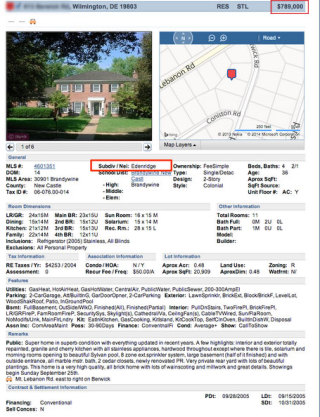
Woodlawn’s idea of affordable housing
Woodlawn’s land holdings in the northern Wilmington suburbs were once vast in scale, perhaps 9,000 acres, and now just 770 acres are all that remain of William Bancroft’s legacy. No one knows how much land they’ve owned because they don't disclose details that might hurt their image. Despite what Woodlawn’s clever new website and slick new video would have you believe, Woodlawn is a developer -- for rich people. The housing communities they’ve built are very far from “affordable”: Tavistock, Sharpley, Edenridge, Alapocas, Woodbrook, (and other posh neighborhoods on “the correct side of I-95” in New Castle County) where the average home price exceeds $500,000. They claim they need the money for affordable housing in Wilmington despite the fact that they bring in millions of dollars a year from their rents. Moreover, Woodlawn has been deeply involved in the commercial development of Route 202, participating actively in and profiting from the creation of yet another of America’s “strips” – a “strip” that is admittedly no worse, but assuredly no better, than the others of its kind throughout the Country.
2. At least one Woodlawn insider stood to profit directly from development in Beaver Valley.
One of the members of a wholly-owned Woodlawn affiliate, Todmorden, is also the co-owner of Eastern States Construction, one of the corporations that submitted plans to develop the wildlife refuge!
The Details:
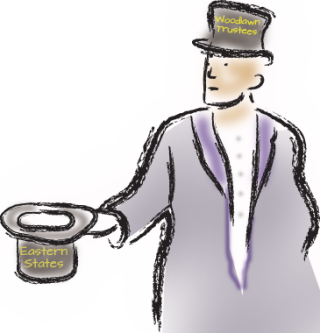
According to the most recent tax records, one of the directors for Todmorden is also the co-owner of Eastern States Construction, which was one of three corporations that had submitted plans in 2012 to Concord Township to pave over the wildlife refuge in Beaver Valley. In a nutshell, this man was in a position on the Todmorden (Woodlawn) board to personally profit from the sale of the wildlife refuge. What’s more, his co-owner generously contributed to the Concord political establishment in advance of plans being submitted to Concord.(1) Why would he do that? The board members at the Wilmington-based Todmorden should explain to the thousands of us who use the refuge why they would allow it to be sold to one of their members. They are Richard Julian, Sheldon Sandler, Vernon Green, Rodney Lambert, Donna Gooden, Peter Morrow, Benjamin Lovell, Susan Frank, and Thomas White.
1. Campaign Finance Report 2012 Republican Party
3. Woodlawn is not a charity; it is a profit-driven corporation.
Woodlawn tries to project the idea that they’re a non-profit charity, but they have not been a charity since about 1960.
The Details:
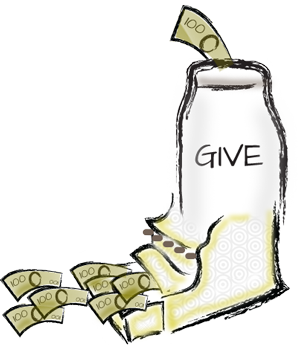
Woodlawn talks as if it were a charity, an organization focused primarily on the public good and granted charitable status under IRS rules. In fact, Woodlawn is not a charity. It is a non-profit, and under the law a non-profit can do anything that any other company (Exxon or Dow, for example) can do, except pay dividends to its shareholders. In fact, in the late 1950s Woodlawn was sued by the IRS on the grounds that it had no charitable purpose.(2) While Woodlawn eventually won this lawsuit, it apparently agreed with the IRS – that the restrictions on a charity were too much for it. So: Woodlawn decided to change its corporate structure – to officially become something more closely resembling the profit-driven corporation it had evolved into. But they wanted it both ways.
This history is important in understanding Woodlawn. During the 1930s, 1940s and 1950s, when it was acquiring much of its property, it enjoyed the tax benefits of a “charity.” This means that a portion of the purchase price of every piece of land that it bought during those years was paid for with money from “taxes” that it didn’t have to pay as a charity. Then, when it turned out that charitable status no longer worked for it, perhaps when it came time to think about selling off its land, Woodlawn converted.
Woodlawn appears to pay attention to taxes. They decided that one of the ways they could enjoy the tax benefits of a “foundation” while staying on course and avoiding government oversight was to create affiliates with tax exempt status. When it came time to sell off pieces of their once huge wildlife refuge, they could transfer ownership to those affiliates which would not pay taxes when the land was sold off.
2. http://findingaids.hagley.org/xtf/view?docId=ead/2424.xml
4. Woodlawn did not donate the land in Beaver Valley that is now The First State National Monument. They sold it for profit, tax-free.
Even as Woodlawn projects to the public the idea that it is a charity acting in the public interest, it engages in all kinds of complex tax sheltering strategies. They're not breaking the law, but this is not exactly the image of themselves that they're projecting to the public.
The Details:
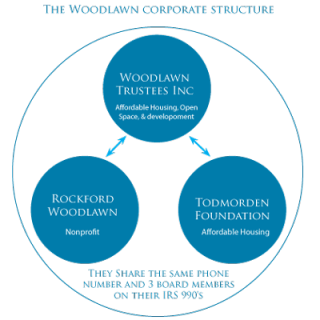
Rockford Woodlawn and Todmorden receive their operating funds from Woodlawn.
Characterized repeatedly by Woodlawn as a donation in their press releases and on their website3, Woodlawn’s spokesman Vernon Green continued to push that idea when he stood up at the May 14th rezoning hearing in Concord Township and said that “Woodlawn transferred over the 1,100 acres...which became the First State National Monument.” Actually, “Rockford Woodlawn,” the non-profit shell that Woodlawn created for this, sold the 1,100 acres tax free for 21 million dollars. Curiously, the board members of that non-profit are most of the people who run day to day operations at Woodlawn: Vernon Green, Rodney Lambert, Donna Gooden, Eleanor Williams and Benjamin Lovell (of the shoe store chain). Then there’s the other non-profit affiliate of Woodlawn, The “Todmorden Foundation,” which shares the same phone number with Woodlawn and Rockford Woodlawn. Its IRS 990 form4, 5 also discloses that it shares Vernon Green, Rodney Lambert, and Donna Gooden as board members. The complete board consists of Richard Julian, Sheldon Sandler, Vernon Green, Rodney Lambert, Donna Gooden, Peter Morrow, Benjamin Lovell, Susan Frank, and Thomas White.
4. Rockford Woodlawn 990
5. Todmorden 990
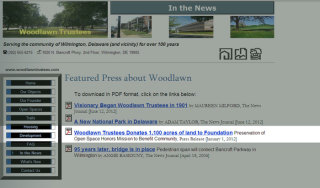
3. False claim on Woodlawn's website
Woodlawn Spokesman Vernon Green's greenwashing speech at the rezoning hearing meeting on May 14th, 2013.
5. One member of the Woodlawn board is being sued for massive securities fraud for allegedly defrauding various pension funds and investors out of hundreds of millions of dollars.
One of the men who allegedly drove The Wilmington Trust into bankruptcy and disgrace now has a say in what happens to the Beaver Valley wildlife refuge.
The Details:
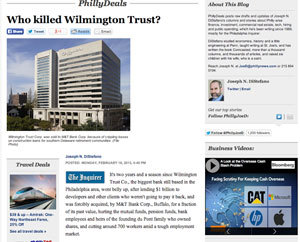
So just who is running the show at the “not for profit” Woodlawn Trustees, Inc.? We found that one board member is the former president of The Wilmington Trust Company who is being sued by former investors and officers at The Wilmington Trust for allegedly defrauding investors out of millions of dollars. In the lawsuit filed in US Court in Delaware, this person is accused, according to The News Journal, The Philadelphia Inquirer, and other sources of "massive securities fraud [that] was perpetrated by “one little clan” of top executives who ‘took the company to the race track’ while hiding behind the company’s reputation for stability and safety.”(6),(7) According to the most recent tax franchise records in Delaware, the board members who have a say in the future of the wildlife refuge are Robert Harra, Caroline Cope, James Eversmann, Richenda Davison, Paul Calistro, Curtis Harkin, Richelle Vible, and Alan Terrell.
6. http://compliancex.com/delaware-banks-wilmington-trust-accused-of-fraud-in-lawsuit
7. http://www.philly.com/philly/blogs/inq-phillydeals/-Who-killed-Wilmington-Trust.html
6. Woodlawn engaged in discriminatory rental practices in their “affordable homes.”
This persisted until pressure from the public, government, and religious institutions forced them to stop this practice in the 70’s.
The Details

For decades we’ve been told by Woodlawn that their primary goal is to provide “affordable housing” in Wilmington, DE and the surrounding areas. A noble goal for sure except that Woodlawn had a history of denying African Americans and other ethinic minories access to their rental properties in the inner city, exactly where affordable housing is needed the most. (8),(9) So while posturing as a “charity,” they were denying low income minorities the opportunity to rent their houses in “The Flats.” It was only when they absolutely had no choice did they submit to integrating their "affordable housing," a phrase which has become their mantra. Another way of looking at this is that Woodlawn integrated its housing at about the same time some southern states did.
8. http://findingaids.hagley.org/xtf/view?docId=ead/2424.xml
9. 1972 Sills - Page 1 ***** 1972 Sills - Page 2
7. You would not want “corporate citizen Woodlawn” as your neighbor.
For one thing, it has no problem flooding your neighborhood roads with thousands of additional cars. For another, it has no problem building a huge box store in your neighborhood.
The Details:
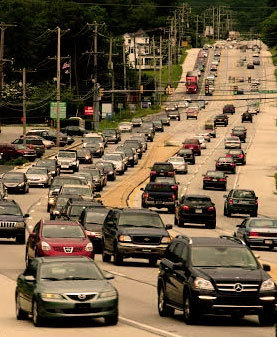
Picture taken of 202 looking south from Route 1, 2013
Woodlawn’s “development” plans for Beaver Valley were simply outrageous. After getting the Concord Supervisors’ attention with several campaign contributions, they asked for a zoning change for Beaver Valley. They weren’t even happy with the 162 houses that the “by-right” zoning permitted. They wanted 550! And a huge box store! This is not to say that we want ANY development in Beaver Valley!
Most exasperating, Woodlawn appears to be uninterested in trying to work with local conservation groups, governmental agencies, individuals, and others who wish to save the lands in Beaver Valley. They do this despite widespread community opposition. We would call upon them to work intensively to try to identify purchasers and organizations for the open space lands that they no longer seem to want. That seems like a small “ask” in exchange for the tax benefits they received when they were a charity, for the costs that their developments have imposed on all of us, and as a gesture of proof that they mean what they say on their website. Why wouldn’t they sell their wildlife refuge to a group of conservancies or individuals who would protect it? To do so would be a win for everyone. The refuge gets saved for the thousands of us who use it every week, open space is preserved, the legacies of Dr. Brubaker10, 11 and William Bancroft are rescued, and Woodlawn makes money.
10. The Merlin Brubaker Legacy:
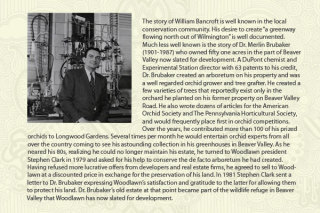
11. Woodlawn's letter to Dr. Brubaker, 1981
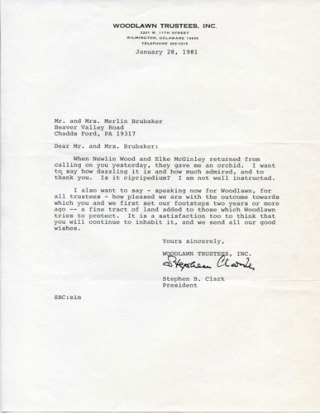
Who are the Woodlawn Trustees?
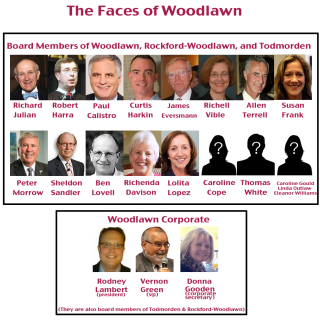
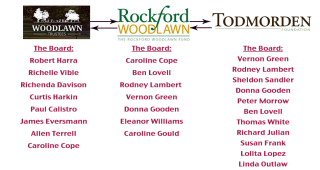
Article written by Ken Hemphill
If You Found This Article Useful...
Save The Valley is funded exclusively by donations from people like you. Articles like these are critical in keeping the public informed about important issues relating to Beaver Valley but require donations to keep them going. If you find this article valuable, please consider making a donation today. No amount is too small. Your donations are a critical part of keeping this effort going. Please donate today!